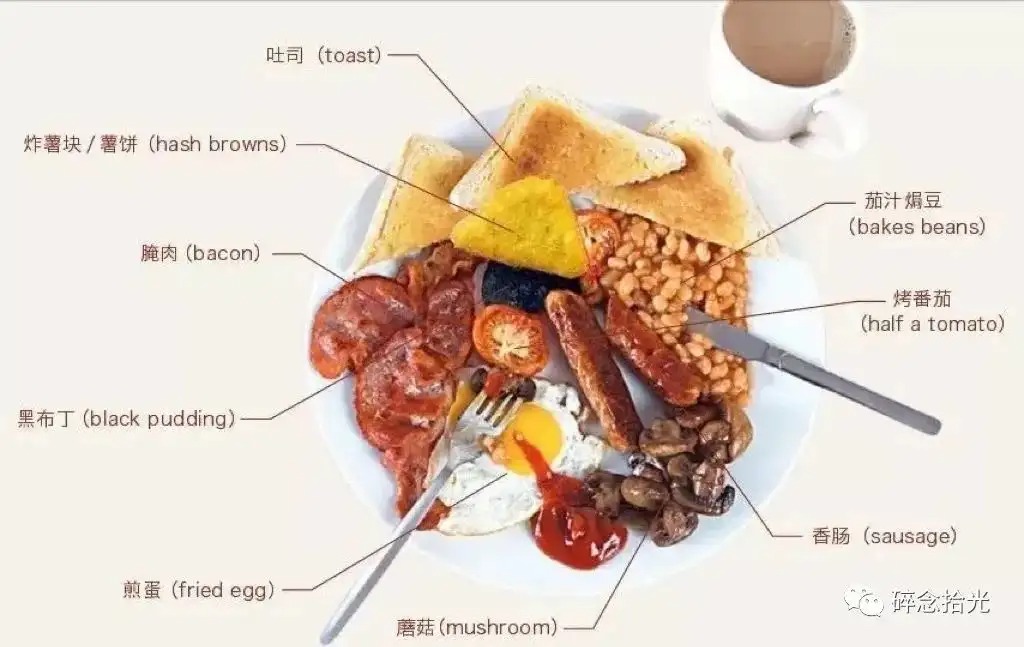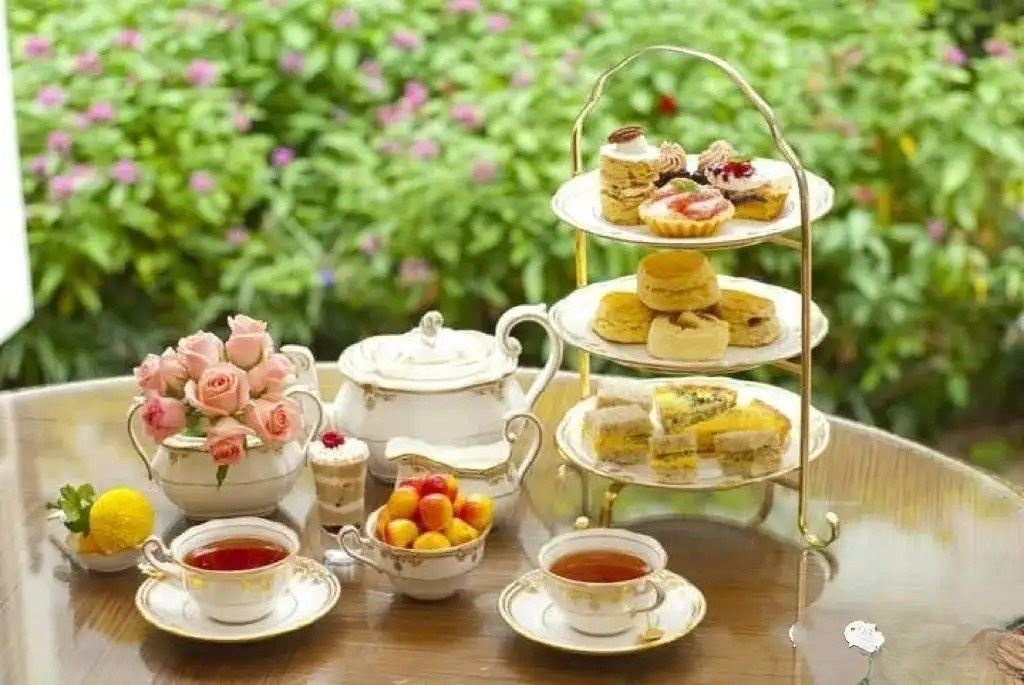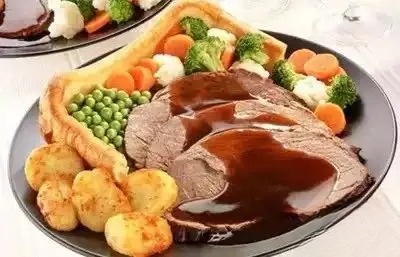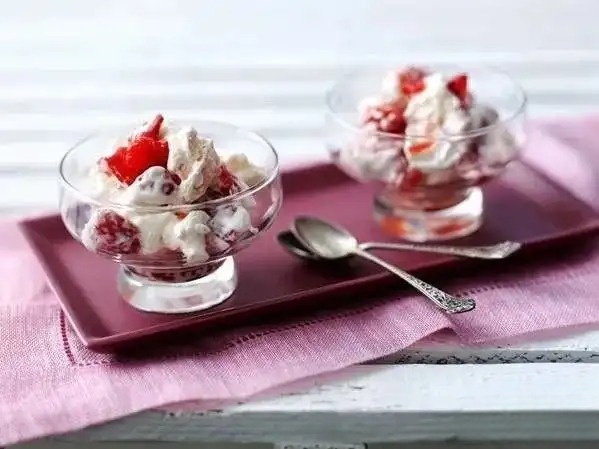Talk about British cuisine
The United Kingdom of Great Britain and Northern Ireland (English: The United Kingdom of Great Britain and Northern Ireland), referred to as "UK". The mainland is located in the British Isles northwest of the European continent, surrounded by the North Sea, the English Channel, the Celtic Sea, the Irish Sea and the Atlantic Ocean.



Traditional English Breakfast FullEnglish Breakfast
Why is the English breakfast so rich ? It all stems from its origins among the British aristocracy . As a traditional British breakfast, its history dates back to the 13th century, when British nobles known as Gentry considered themselves the inheritors of the noble Anglo-Saxon lifestyle and culture .

According to traditional Anglo-Saxon customs, they like to prepare a hearty breakfast for visiting relatives, friends or neighbors. All the ingredients are taken from their own land. The purpose is to show off their vast territory and abundant financial resources, show their guests their own breakfast, and show off their chefs' cooking skills.

By the 20th century, the English breakfast had spread rapidly across the country, and most Britons chose to start their day with a traditional English breakfast. From homes to hotels, from bed and breakfasts to trains, the English breakfast was everywhere . As a result, the traditional English breakfast, as a national dish, became one of the most hearty breakfasts in the world. There's something quintessentially English about leisurely enjoying a hearty breakfast while reading the newspaper.

The traditional English breakfast is considered one of the most hearty breakfasts in the world. A full English breakfast must include bacon, sausage, eggs, tomatoes, mushrooms, toast, baked beans, harsh browns, and black pudding. However, the specific ingredients vary depending on the region and taste .


Lunch
Lunch in the UK is extremely simple , typically consisting of a "packed lunch" consisting of a sandwich, a bag of chips, and a small amount of fruit. Surveys show that British office workers typically spend less than five minutes on lunch, suggesting its simplicity. This simplicity makes afternoon tea an essential part of the British diet, a unique dietary tradition.

Afternoon tea
In Britain, everyone from the Queen to the common people enjoys a sumptuous afternoon tea. A large three-tiered tabletop features a variety of sandwiches on the bottom tier, delicious scones and jams in the middle, and mini cakes, macarons, and fruit tarts on the top. As people sip steaming Earl Grey tea and chat about gossip and their innermost thoughts, time slows down unnoticed .

Dinner
Dinner is a very important ritual for the British. A hearty dinner can comfort the body after a busy day. The British have a strong sense of ritual for dinner. The order and etiquette of serving dishes are strictly followed. The meal includes "one meat and two vegetables". The meat dishes are usually pork, steak, grilled fish, and roast chicken. The "two vegetables" are potatoes, carrots or broccoli.The British love to eat potato products, such as French fries, jacket potatoes, potato soup, mashed potatoes, potato chips, potato sauce... They also drink a glass of wine after meals to help digestion .





Around 1893, Eton mess was first recorded to appear. The British have always had the habit of drinking afternoon tea with desserts, and spring is the season for strawberries. The British, who love sweets, mix strawberries, meringue and fresh cream together to create the famous Eton Mess.

Although it is just a "random mix", don't think it is not worthy of being served in a formal occasion. At the wedding of Prince William and Kate Middleton in 2011 , it appeared as the protagonist on the dessert table, which not only expressed the deep love for Kate Middleton, but also a trace of nostalgia for his alma mater.

Material:
100 ml light cream
50g powdered sugar
100 grams of cheese
appropriate amount of meringue
Strawberries as needed
Blueberries in moderation
practice:
1. Add cream to cheese and beat until thick
2. Add strawberries, powdered sugar and meringue in turn and mix well
3. Arrange the dish slightly and place in the refrigerator for 1 hour

5. Scotch Eggs
Scotch eggs are said to have been invented by the 300-year-old British department store Fortnum & Mason in 1738. They are made by squeezing fresh sausage meat into minced meat, wrapping a boiled egg in the middle, and then forming a ball, coating it with breadcrumbs, and deep-frying it.

Material:
10 quail
200g minced pork
50 grams of green onions
10 grams of ginger
1 egg
50g breadcrumbs
25g flour
5 grams of salt
10 ml light soy sauce
5 ml cooking wine
3 grams of oyster sauce
10 ml cooking oil
starch in moderation
appropriate amount of sesame oil
White pepper to taste
practice:
1. Heat the pan, pour in cooking oil and breadcrumbs
2. Fry on low heat until golden brown, then serve
3. Add minced ginger and chopped green onion to the minced meat, then add salt, light soy sauce, oyster sauce, cooking wine, starch, sesame oil and white pepper to taste
4. Stir in one direction until the meat filling becomes sticky and set aside.
5. Cook the quail eggs , soak them in cold water for a while, and peel the quail eggs .
6. Divide the meat filling into 10 equal-sized portions and dip the quail eggs in flour ( roll the quail eggs in flour in advance to allow the meat filling and eggs to stick together better ).
7. Dip the prepared meatballs in flour and gently squeeze them.
8. Dip in egg liquid again and coat with breadcrumbs
9. Cover the baking tray with tin foil, brush a layer of oil to prevent sticking, and put all the meatballs in.
10. Preheat the oven to 200 degrees, place the baking tray in the middle layer , and bake for 18 minutes.
6. Sunday Roast with Yorkshire Pudding
It became popular in England in 1485. At that time, people would roast a large piece of beef before attending church on Sundays, so that by the time they returned from church, the meat would be ready to eat. A typical Sunday roast consisted of roast beef, various seasonal vegetables, and the essential Yorkshire pudding, all topped with a thick gravy . The Yorkshire pudding here was nothing like a dessert pudding. It resembled a coffee cup, had a texture similar to soft bread, and a slightly salty flavor. Because Yorkshire pudding easily absorbed gravy, it was often served as an accompaniment to roast beef and beef gravy .

7. Bangers and Mash
Sausages and Mash is a traditional British dish, also known as sausages and mash. The best sausage is the Lake District's Cumberland sausage , a pork sausage seasoned with pepper, thyme, sage, nutmeg, and chili peppers . It's usually served on a bed of mashed potatoes and drizzled with onion and beef gravy.

8. Beef Wellington
Beef Wellington is a dish made from a single cut of beef. Compared to a typical steak, it has a richer flavor profile, with the savory aroma of mushrooms, the juicy tenderness of fillet, and the crispy texture of puff pastry. These three flavors combine to create a uniquely delicious dish. It's a common dish on the menus of many high-end restaurants.

9. Cornish Pasty
Cornish pasties are a combination of vegetable and rice pastry. The pasty crust is folded and sandwiched together to form a semicircle or half-moon, resembling a large dumpling. The filling is made from beef, onions, potatoes, cabbage, and other ingredients.

10. Shepherd's pie
Shepherd's pie is not a traditional pie made with flour dough. Instead, it is a flourless pie made with mashed potatoes as the pie surface and meat and vegetables as the filling. The meat filling can be beef or lamb, and it is delicious when eaten hot from the pan .

Material:
A. Mashed potatoes
1 potato (small or medium)
a pinch of salt
A pinch of black pepper
10g butter, 50-60ml milk
The amount of milk should be adjusted according to the size of the potatoes
If you like cheese, you can also mix in some shredded cheese
Mashed potatoes method:
1. Steam the potatoes for about 20 minutes until cooked through
2. Add black pepper, a little salt and a small piece of butter while hot, and crush into a paste
3. Add milk in small amounts and multiple times to adjust the mashed potatoes to your desired firmness. The amount of milk is not fixed , it depends on whether you like softer or harder mashed potatoes. In short, adding a little bit at a time will not go wrong.
B. Filling ingredients:
1 piece of hamburger meat
3 tablespoons chopped onion
1 carrot
7-8 shiitake mushrooms
A little rosemary (optional)
1 tablespoon oyster sauce
1 spoon of tomato paste
A pinch of black pepper
a pinch of salt
1 small bowl of water or red wine
Oyster mushrooms are a big plus, so make sure to add them. Other vegetables like celery, cucumber, peas, etc. are also fine.
practice:
1. Heat the pan and add 1 tablespoon of oil. Stir-fry the onion until fragrant, spread it around, add the hamburger meat, fry on low heat on both sides until it changes color, and put it in the baking tray for later use.
2. Do not remove the onion, continue to add carrot shreds and mushroom slices, stir-fry until they are cooked.
3. Add tomato paste, oyster sauce, a little salt and a lot of black pepper, stir fry evenly, pour in half a bowl of water or red wine, and simmer for a while
4. Cook over medium-low heat until the juice is reduced and turn off the heat when there is only a little juice left . If you have spices such as rosemary, you can also add some.
5. Mix the fried vegetables with the hamburger meat, cover with mashed potatoes, and use a fork to mark the texture
6. Bake at 200℃ for about 30 minutes, until the mashed potatoes are golden brown.

11. Haggis
Haggis is the name of a dish made with sheep stomach, heart, lungs, liver, etc. It is known as the "national dish" of Scotland and is generally believed to be influenced by the poem "Address to a Haggis " written by Scotland's national poet Robert in 1787 .

Ingredients:
1 sheep lung
1 sheep stomach
1 sheep heart
1 lamb liver
1/2 pound fresh suet
3/4 cup oatmeal
3 chopped onions
1 teaspoon salt
1 teaspoon fresh pepper
1/2 teaspoon chili pepper
1/2 teaspoon nutmeg
3/4 cup broth
practice:
1. Wash the sheep lungs and stomach, rub salt, rinse to remove the film and excess fat on the internal organs, soak in cold salt water for a few hours, turn the stomach inside out for stuffing
2. Bring the lamb's heart and liver to a boil in cold water, then reduce the heat, cover and continue stewing for 30 minutes.
3. Chop the lamb heart and grind the lamb liver. Toast the oats on a tray in the stove until they turn brown. Mix all the ingredients together.
4. Fill the lamb shank loosely with the mixed ingredients until it is 2/3 full.
(Note that the oats will expand during cooking)
5. Squeeze out all the air in the tripe, tie it tightly, and put it into boiling water. Cover the tripe with water and cook for three hours. Do not cover it and keep adding water to keep the water level
6. When the sheep's stomach begins to swell, prick it with a needle a few times to prevent it from bursting.
Haggis is traditionally served with mashed potatoes, kohlrabi and whiskey.

12 Apple Crumble
Apple crumble is a dessert originating from the UK. After its introduction to Hong Kong, it earned the endearing transliteration name of Apple Crumble. Developed during the scarcity of World War II, the British, unable to resist sweet treats, used apples, butter, flour, and sugar to create this beloved dessert, which remains popular in Hong Kong to this day. Furthermore, it's virtually foolproof, requiring no 100% precision in ingredient measurements and a simple, uncomplicated process, making it a true delight for those with clumsy hands.

It consists of peeled, cored, and sliced Bramley apples covered in a crumbly breadcrumb mixture made from flour, sugar, and butter. This delicious dessert is baked in the oven until the breadcrumbs are golden brown and the apples are soft. It's often served with vanilla ice cream or a custard made from eggs, milk, and vanilla. Other fruits can be substituted for apples, such as blackberries, peaches, rhubarb, and plums. The topping can also be replaced with oatmeal, almond meal, or other nuts.

Material:
2 apples
20g granulated sugar
1 teaspoon cinnamon powder
1 lemon
100g butter
100g granulated sugar
200g low-gluten flour
30g oats
1 tablespoon = 15ml
1 teaspoon = 1 tea spoon = 5ml
practice:
1. Cut the apple into small dices
2. Add apple cubes and granulated sugar to the pan and fry over low heat until softened.
3. Rub lemon zest, squeeze in the juice of half a lemon, add cinnamon powder, stir fry for a few times, turn off the heat and set aside
4. Mix 100g of softened butter and 100g of sugar, then add 200g of low-gluten flour, press gently with your fingertips and turn it loose, then add oatmeal and mix well
5. Place apple cubes on the bottom of the baking bowl and cover the surface with crisps. Bake in the oven at 180 degrees for 35 minutes.
6. While it’s still hot, cover it with an ice cream ball and eat it with a spoon. The ice cream slowly melts into cream and pours it over the soufflé. It tastes amazing .

13. Stargazy pie

14. Pigs in Blankets
Pigs in blankets are a name for cooked mini hot dogs wrapped in bread, usually served with ketchup and mustard. Cutely named and easy to prepare, pigs in blankets are a British Christmas speciality and a popular party appetizer.

Britain's first encounter with tea can be traced back to the late 17th century. The British East India Company established ties with India in its Eastern trade, and tea, as a key commodity, began to pique British interest. The first tea was imported in 1662, marking the beginning of British tea culture.

Tea culture has also had a significant impact on British society's dietary habits and lifestyle. The popularity of tea has transformed the British diet, with people beginning to drink tea as a daily beverage, and tea drinking has become a British habit. Tea consumption has also driven the development and use of teaware, with teapots, teacups, and other teaware becoming indispensable household items. The cultural value and pursuit of quality in tea have also influenced the British lifestyle, leading them to prioritize the quality and production of tea, and to pay attention to tea selection and cooking techniques.

Every country has its own unique climate, location, and people, as well as its own unique historical background, and food has played a distinct role in different historical periods. Local climate and soil shape local people, and the "dark dishes" we find unaccustomed to may also be precious memories of home for the British.
